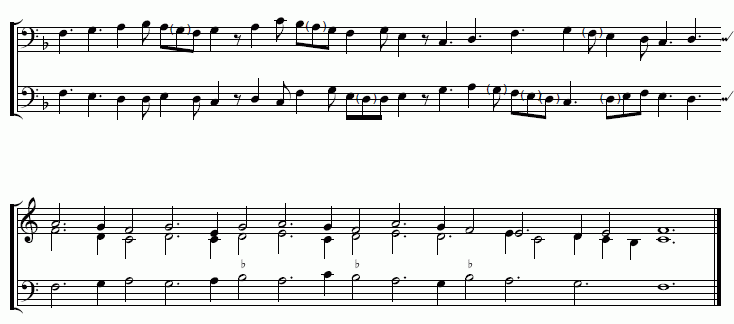| Conductus style In the 13th century, the conductus - a song for a cermonial procession - is replaced by the more popular motet. The conductus style however, is a useful term to describe certain medieval composition techniques. The conductus is a homophonic, homorhythmical, syllabic, non-liturgical composition. Often two- or three-part. All the parts are newly composed (in contrast to organum or clausula). The rhythmical/metrical organisation is by rhythmic modes (= Greek poetic metres as trochee, iamb, dactyl, anapest, spondee, tribrach). A special form of the conductus is the three-part one with a harmony that can be described as parallel sixth chords (= parallel intervals third and sixth, which is -from a historically point of view- a better description). Often referred to as 'descant' or 'english discant'. The conductus style can be defined as a 'note-against-note' style, though often slightly ornamented. Below two examples from the 13th and 14th century. 
Remark In the above text we don't speak about a early medieval monophonic conductus, a composition for one voice. |